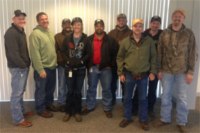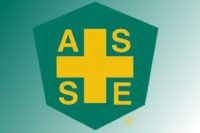“The safety profession has a marketing problem. It needs to get more shrill, more aggressive,” he said. “You are competing for mind share with the other environmental, social and governance (ESG) factors driving corporate sustainability initiatives – water resources, child labor, pollution. Companies must decide which issues to focus on and invest in. What is safety doing as a social movement? You should think of safety as a movement.
Too old? Too conservative?
“Perhaps safety at 100 years (the approximate age of ASSE) is too old and too conservative. You should become activists. Become a movement. Invite non-governmental organizations (NGOs) to your next meeting. Safety should pressure company boards of directors like NGOs do to enact change. Safety can learn from groups like Greenpeace. There are similarities. NGOs and the safety profession are mission driven. They are about social change, which does not come easy.”
Leave it to a safety outsider like Professor Eccles to be perfectly blunt about what the safety profession ought do to get presence in the boardroom. His talk at the National Press Club in Washington didn’t fall on deaf ears. Leaders from the Center for Safety and Health in Sustainability were in attendance. The center, founded in 2010, is a collaborative effort of ASSE, the American Industrial Hygiene Association, and the Institution of Occupational Safety and Health (IOSH), based in the UK.
“Safety and health is considered part of an organization’s sustainability. There is the opportunity for safety to be front and center in this whole issue,” said Kathy Seabrook, the immediate past president of ASSE.
Sidetracked by OSHA – unintended consequences
But I listened to Professor Eccles that day and thought of his challenge to the profession in terms broader than inclusion in the sustainability movement. A seat at the boardroom table has been the Holy Grail for the profession for, well, about a century. I think safety was closer to that goal in the 1950s and early 1960s – read “Safety Management: Accident Cost and Control,” published in 1963 by Rollin H. Simonds and John V. Grimaldi. It is pioneering work in making the business case for safety.
Then OSHA came along in 1971 and safety became a compliance policing thing. Many businesses, angered at OSHA’s sudden intrusion into their operations, put the safety job in a silo removed from mainstream business activity. In some cases, the further away, the better. Companies wanted to distance themselves from federal intruders. Safety was seen as a cost center – got to buy PPE, machine guards, gas detectors et al – because OSHA says so.
And so begins safety’s “marketing problem” – corporate confinement to the compliance cop role. More than 40 years later, the profession still battles this reputation and branding dilemma in many workplaces. It’s not an easy fight. It’s hard to be “shrill” and “aggressive” with the boss who signs your paycheck. NGOs are a completely different animal. They can be confrontational and demanding because they reside outside the corporate perimeter, beholding to no HR department or org chart, lobbying and protesting with no fear of being kicked off a company payroll.
Many safety pros have taken a more “conservative” approach to winning the hearts and minds of senior executives. As one pro put it, his task was to create “cognitive dissonance,” within his company – a less threatening term for rocking the boat. Sure, other pros with more assertive, some would say more abrasive, personalities spoke their mind, stood up against corporate indifference or apathy, and not infrequently paid the price by being shown the door. Or they quit as matter of conscience.
Sustainability affords new leverage
But in 2014 sustainability offers safety previously unavailable corporate leverage. The “S” in ESG factors – “social” issues – includes safety and health. And investors are beginning to “get” safety and health’s potential positive impact on financial performance: improved productivity and morale; reduced turnover and absenteeism; reduced potential for litigation and reputational risk; brand protection; increased sales based on the safety of products. What’s needed is hard evidence, research, to back up this connection.
Professor Eccles offered tantalizing research of his own. High sustainability companies, he found, measure EHS performance in more ways than injury and illness rates. They emphasize non-financial metrics. They measure labor relations and grievance processes. They see safety and health as indeed a social issue. And, high sustainability companies offer superior stock market performance in the long term, he said.
Sustainability just might be the key that unlocks the boardroom door for the profession. It’s worth seeing if it works.










